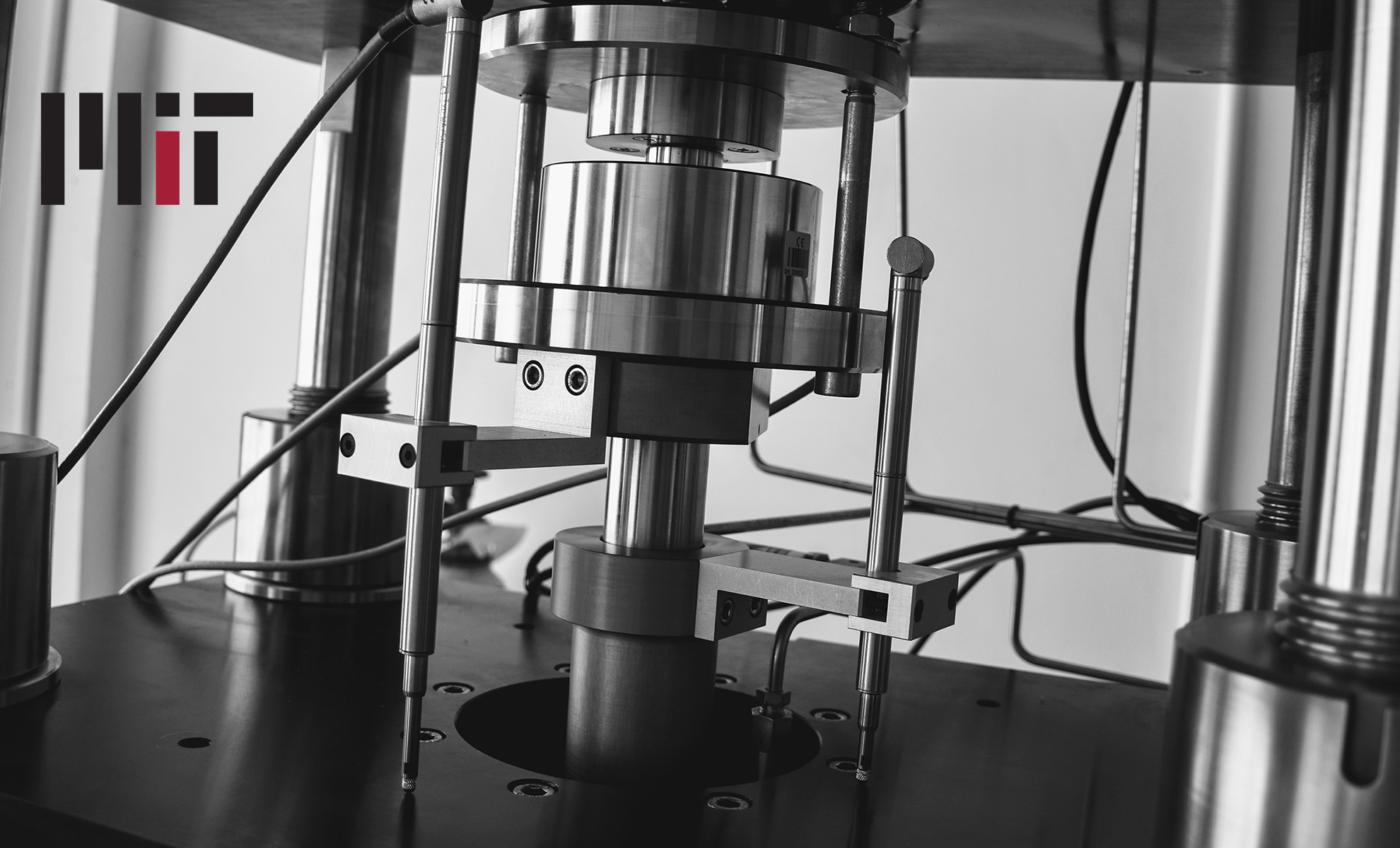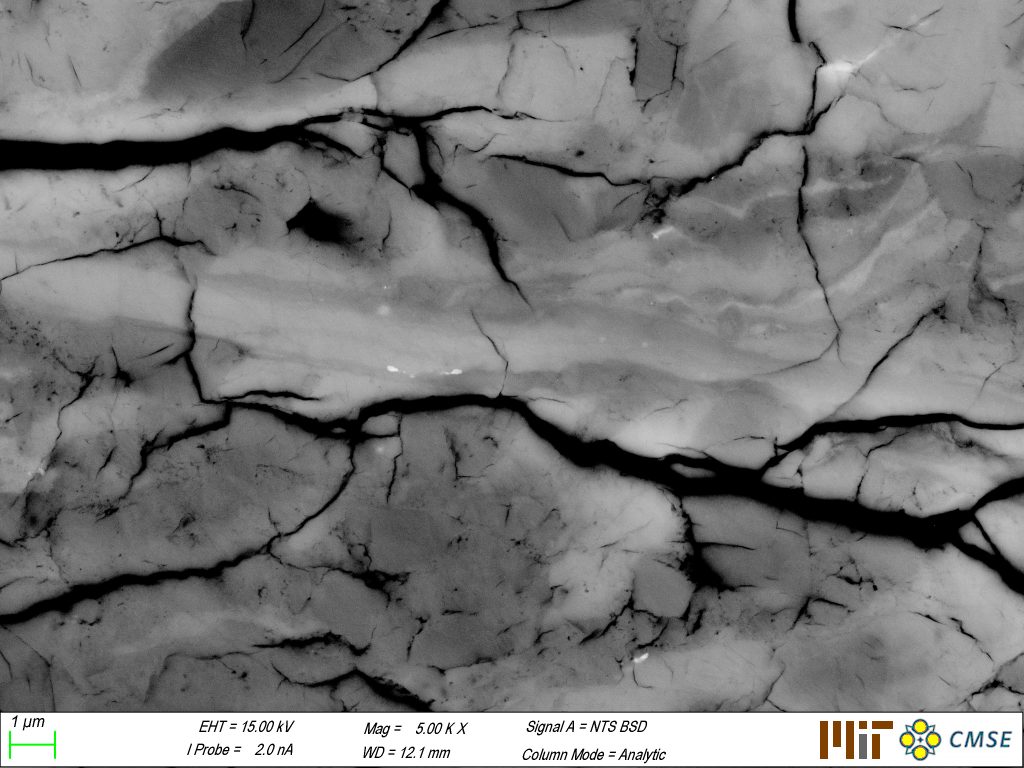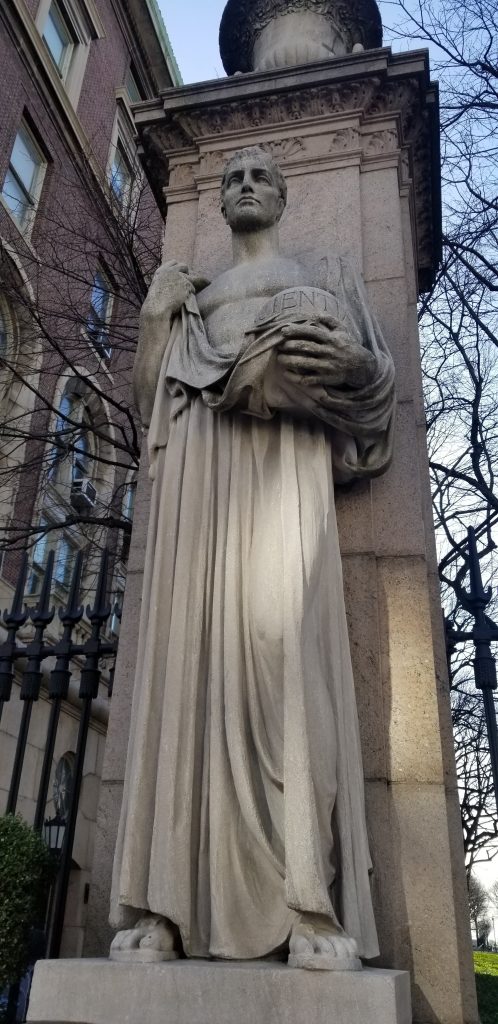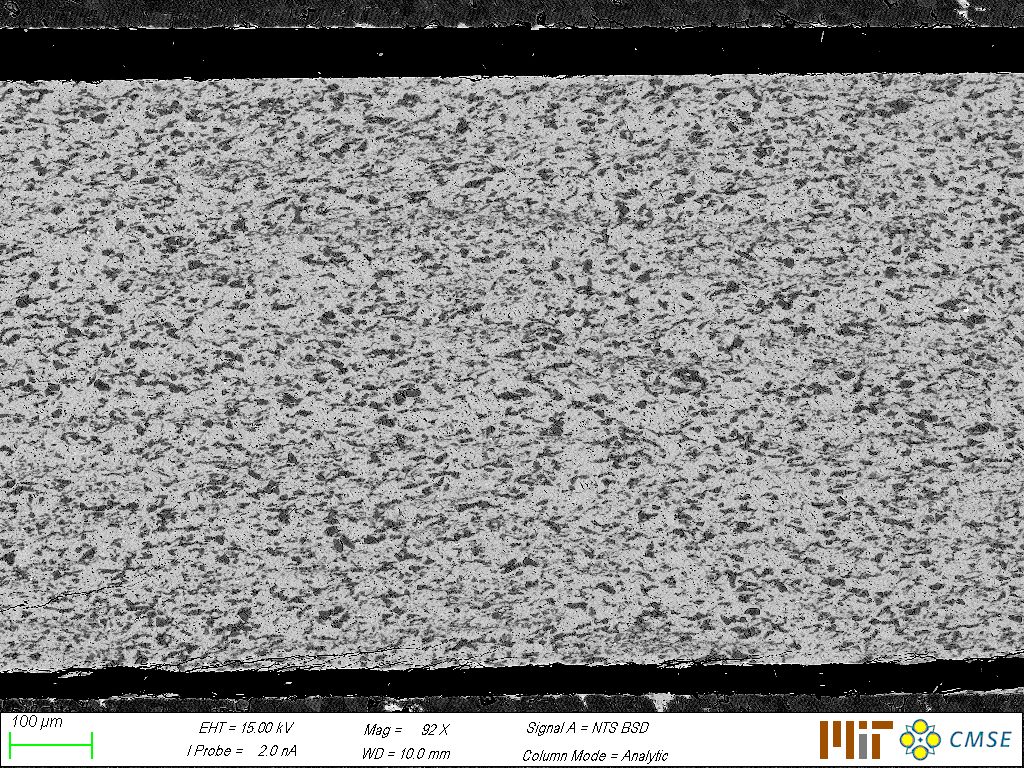A new paper by Jacqueline Reber and Matej Pec on semi-brittle flow of quartzites is published in Journal of Structural Geology – check it out

experimental rock deformation
A new paper by Jacqueline Reber and Matej Pec on semi-brittle flow of quartzites is published in Journal of Structural Geology – check it out
Check out our BETA version of newRig program for synchronizing, merging and evaluating data from Sanchez deformation apparatuses. Follow the link to download here
What could the zone in the center of the image be…? Post your best guess in the comments!

Matěj gave a talk at the departmental seminar at LDEO of Columbia University in New York. It was great to talk to all the researchers there and see the ice friction lab.

We ave investigated first Saleh’s experiments using a Scanning Electron Microscope (SEM). Below you can see an overview of a 70:30 k-feldspar : quartz sample deformed at 800 MPa confining pressure and 750˚C, i.e. P-T conditions corresponding to approximately 25 km depth. K-feldspar is bright while quartz is dark. Top and bottom of the sample are large unloading cracks (black) separating the sample from the alumina forcing blocks (gray).

Terry Tullis has lead the first joint meeting between MIT and Brown University. Terry summarized the state-of-the-art in rate-and-state friction. The meeting was video linked to MIT and other universities and research institutions, more then 20 people participated. The goal of our Colaborative Organization for Rock Deformation (CORD) is to encourage and facilitate participation in experimental rock deformation studies by a broader spectrum of scientists within the Earth science community.
We just got back a first set of thin sections from our first batch of experiments and they look magnificent. Saleh deformed 50:50 and 70:30 mixtures of quartz and k-feldspar with a initial grain size of ≈10 µm at 800 MPa confining pressure and 750˚C. Below is a optical micrograph of a 70:30 mixture where one can see the extension of the minor phase (qtz in this case) sub-parallel to the shear zone boundary. Alumina forcing blocks are white and the rock is darkish due to its fine grain size. We are very excited to study these rocks in the SEM to see more details at higher magnifications.

Matej gave a departmental seminar at Brown and enjoyed a thorough lab tour of the great rock deformation lab.
Matěj gave a talk at the seminar of University of Pennsylvania in Philadelphia about reactive melt migration. It was a pleasure to visit and see all the experimental labs at UPenn.

Yesterday we have finished our first real rock experiment after a long time of testing and calibration of our deformation apparatus. Saleh masterfully prepared his first sample so that it survived all the pressurization with no problems. The sample is a 50:50 mixture of quartz and feldspar and it was hot-pressed at 1 GPa confining pressure and 900˚C for 10 hours.
